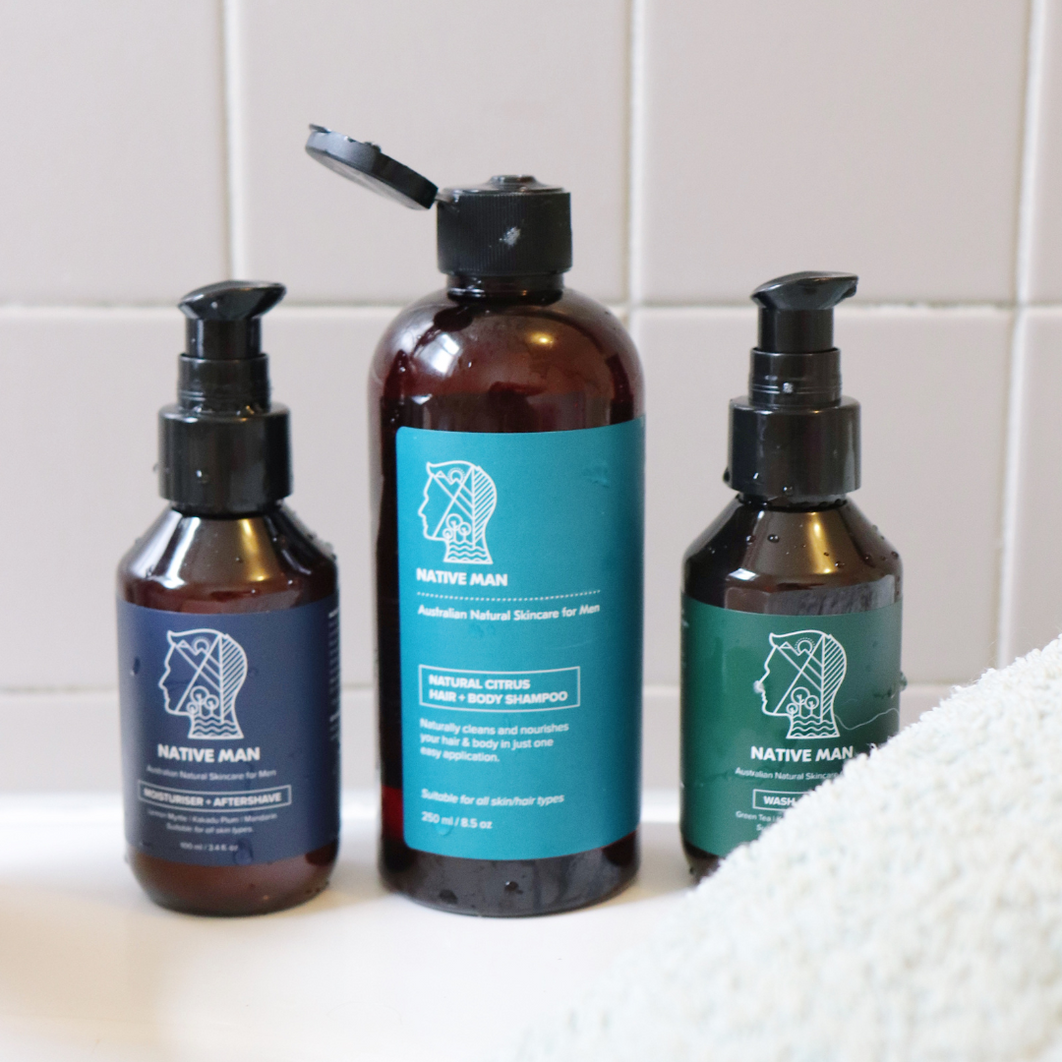A wonder oil straight from nature, it's believed Kunzea Oil has been used topically by Aboriginal communities in Tasmania to relieve irritated skin and muscular aches and pains for thousands of years.
At Zea, we are committed to sharing the diverse healing benefits of Kunzea, while also protecting the unique Tasmanian ecosystem in which Kunzea grows and thrives.
Today I want to take you through the sustainable production process of Australian Kunzea Oil - from seedling to the pure oil we use as the key active ingredient in our signature range of Zea Relief products for health, wellness and lifestyle.
We pay meticulous attention to detail when it comes to monitoring every stage of production, from harvest right through to bottling the final product. Our pure, unadulterated ingredients pass through multiple rounds of testing and strict process control protocols to meet the highest standards for purity and quality.
While this article focuses on Kunzea Oil, as our signature active ingredient, we use many of the same processes for all of our 100% pure essential oil to ensure our products are of a consistent and premium quality.
1. Growth & Plant Maintenance
The first stage is growth. Kunzea grows profusely in the wild, especially in Tasmania and the Bass Strait islands. It seems to grow very well in poorer, sandy soil that other things won’t grow in - in fact, a lot of locals consider it a weed because it grows so quickly and abundantly. There is no fertiliser or spray required, the farmers just leave it to grow naturally until it's ready to harvest.
While Kunzea is still predominantly wild-harvested in North East Tasmania, this has begun to change in recent years as significant investment has been made into the increasing availability and some producers have started to establish Kunzea crop plantations for the first time. A wonderful step towards maintaining a sustainable use of the plant.

2. Harvest
The second stage in the production cycle is the harvest. This is a community affair, with local residents employed for the harvesting of this Australian native.
From seedlings, a sustainable and considered approach is taken. It can take up to 36 years for the plants to mature and to ensure the root structure of the Kunzea plant has time to bind itself to the soil.
After 12 months - Hand cut
After 24 months - Light harvest
After 36 months - Full harvest
Once the Kunzea plant is fully mature, it's harvested 1-2 times per year. It needs to be harvested at certain times for optimal essential oil quality.
In fact, UTAS is currently investigating growing techniques that might encourage Kunzea to produce more of its special oils with even higher quality. Not only will the research confirm the health benefits of Kunzea and help us communicate these to the rest of the world, but it will also reduce processing costs and ensure the production process is more efficient and sustainable.
Until this research has been carried out, Kunzea is still considered a low yielding plant. A harvesting bin of 5 cubic metres normally only produces about 5-6kg of Kunzea Oil.

3. Distillation
By now you might have guessed that Kunzea is a very complex plant in the way that it's structured, so this next stage is an essential step in both extracting and retaining its unique therapeutic properties.
The third stage is the distillation. As soon as the harvesting is complete, the bins of Kunzea biomass are taken straight back to the distillery to steam distill immediately, as it’s not good to let it sit overnight.
Steam distillation involves extracting and isolating the essential oil from the Kunzea plant. The steam vaporises the plant material's volatile compounds, which eventually go through a condensation and collection process.
The water used as part of distillation is taken from the nearby spring, which runs underground and on top of the still-house.
The distillation starts when steam permeates through the biomass. It takes about 25-30 minutes. You can then start to smell the Kunzea oil coming off it which is pungent and refreshing.
Next, it goes through the condenser into the oil separator and takes up to 3 hours to adequately distill. Early research indicates that increasing the length of distillation of Kunzea Oil to about 3 hours, results in a higher percentage of active components within the oil (such as viridiflorol) that give it its unique anti-inflammatory properties.
After it's separated, it's then filtered and stored.
Kunzea produces a herbaceous oil that is said to have the scent reminiscent of the Australian bush. It’s thanks to its unique composition, including a very high level of alpha-pinene, which gives it a slightly woody, medicinal scent. Some have described it as a breath of fresh island air. One inhale just might transport you straight to the Tasmanian wilderness!

4. Regeneration
One of the great aspects of Kunzea is that the production cycle is sustainable in nature. Once the oil has been distilled and stored, the leftover mulch from the harvest is taken out into a separate section of the paddock. It's turned over every 2-3 weeks, and after about 4 months it produces black, gold-standard compost that is used by the locals in their gardens and to cover the Kunzea seedlings.
In the future, any wasted oil will be used for operating the boilers.
The Kunzea plant regrows every 12 months. After harvesting, the plants quickly begin sprouting with very little plant maintenance required.
It's a very simple, all-natural and sustainable process. A bit like Mother Earth’s own regenerative cycle.

5. Quality Control & Testing
Newly-distilled Kunzea oil must then be tested by a third-party lab before being packaged for final use. We have strict quality control standards for testing the identity, purity, strength, and composition of all our essential oils at Zea.
Quality testing practices help ensure that the pure volatile compounds found in Kunzea Oil are not only preserved during the packaging process, but that the compounds appear in the proper amounts for maximum efficacy. There are several tests that essential oils must undergo to ensure quality; however, the main goals of quality control testing are to verify potency and ensure purity. This is achieved through what is called a GC-MS Test (or Gas Chromatography-Mass Spectrometry Test). In fact, GC-MS testing is one of the top things we recommend looking for in a quality essential oil provider.
Kunzea is a very balanced and unusual essential oil when it comes to its biochemical composition. It has a high content of several important C15 compounds. The GC-MS Test will verify the major components of the distilled oil. A typical analysis of Kunzea Oil will fall into the following ranges:
- Alpha-pinene (30 - 50%)
- 1,8 cineole (9 - 20%)
- Alpha-terpineol (0 - 9%)
- Bicyclogermacrene (3 - 7%)
- Globulol (0 - 11%)
- Viridiflorol (7 - 18%)
In addition to GC-MS Testing, we also conduct other tests on our essential oils. These may include: microbial testing, organoleptic testing, batch release testing and other quality control procedures.
Kunzea Oil Chemistry
While a lot of oils can lay claim to similar benefits to Kunzea, it's the high content of these C15 compounds in the organic composition of Kunzea ambigua that makes it unique and such a key ingredient in our Zea Relief Kunzea Range. Studies have demonstrated that these constituents have anti-inflammatory properties.
Sourcing Kunzea Oil with a high viridiflorol content is of particular interest to us at Zea Relief, as it's one of the core components in the composition of the oil that enhances its anti-inflammatory properties. This is important when formulating our Kunzea Relief Products.
Research is currently being conducted at UTAS on the effect of steam distillation and composition of the oil from Kunzea ambigua. Early results have demonstrated that a longer distillation process can result in an increase in viridiflorol content from ±10% to ±17%.
Many producers of Kunzea ambigua are dedicated to understanding each of the existing natural constituents in Kunzea oil. Further trials are being conducted on different harvesting techniques, on the use of superheated steam and into the antibacterial and anti-fungal properties of Kunzea ambigua essential oil.

6. Packaging
Once Kunzea Oil has been thoroughly tested to ensure that it's 100% pure, potent, and doesn’t contain any contaminants, it's time to package the oil for final use. Like all of the steps in the production process, packaging is something that is also very important to us at Zea.
Packaging an essential oil is particularly important when it comes to preserving its quality and purity. When a batch of new oil has been tested and approved for use, it's funneled into glass amber bottles with dripolators and securely sealed with a cap or lid. It's important to keep an essential oil like Kunzea in a dark bottle to protect it from sunlight and other sources of UV radiation that have the potential to spoil its composition.
Any plastic used in packaging (lids, dripolators, bulk packaging, etc.) must be made from specific types of high quality plastic to prevent contamination or erosion over time when it comes in contact with the essential oil.
Once the Kunzea Oil has been securely sealed, it's labelled and stamped with a batch number and best before date. Expiry dates and batch numbers are not mandatory on essential oils. However, we choose to include them on most of our Zea products so that you have some idea of when the oil was produced. It also helps us keep track of different batches and the testing results associated with each batch, which is very important from a quality assurance standpoint.
The best before date on any essential oil in our range should be treated as a guide only. We recommend that you use your own judgment before discarding an expired oil. You just may be discarding a perfectly good oil which has matured over time!
In addition to small bottles, we pack Kunzea Oil into larger containers to be used as the key active ingredient in our signature range of Zea Relief Kunzea products.
We also have Kunzea Oil available for bulk purchase, contact us to learn more.
Conclusion
As with all Zea products, Kunzea is produced at the highest quality. Sustainable harvesting, distilling practices, and a visible supply chain are always top of mind when sourcing this Australian native essential oil. It's the cornerstone of our family business, where our uncompromising dedication to purity, quality, traceability and transparency inform every choice we make.
To learn more about Kunzea Oil, we recommend reading our other posts on “The History & Science of Kunzea Oil” and the “15 Benefits and Uses of Kunzea Oil”
Author - Hayden Brass
For the past few years, Hayden has lived and breathed Zea. He has been the driving force behind turning what was a family project into a real business that could positively impact millions of people throughout the world. It's Hayden's personal mission to develop products that have a positive impact on people’s lives and well-being. When he is not working and talking about Kunzea Oil, Hayden enjoys getting outdoors into nature and exploring the beautiful planet in which we call home.



